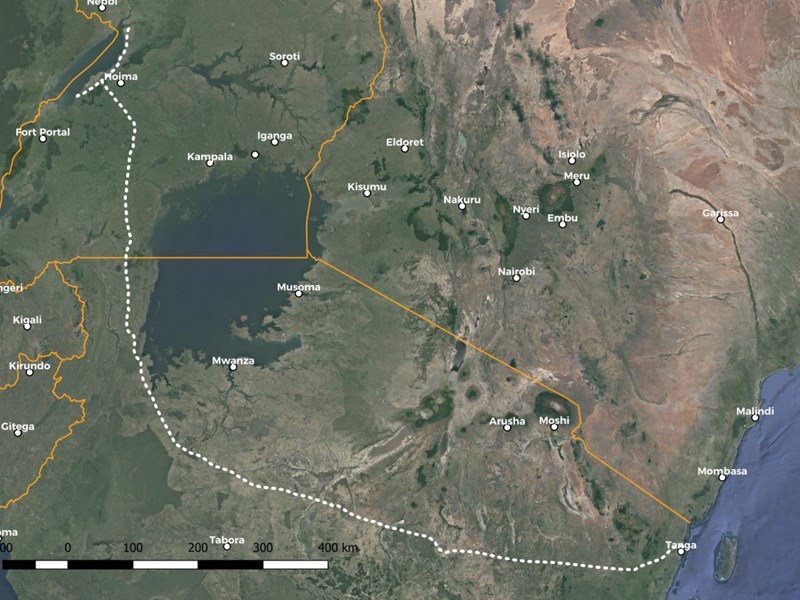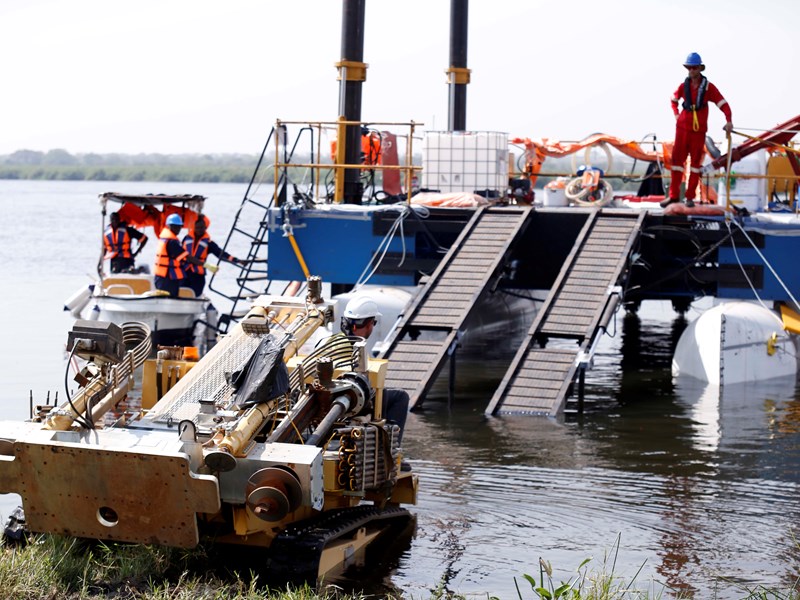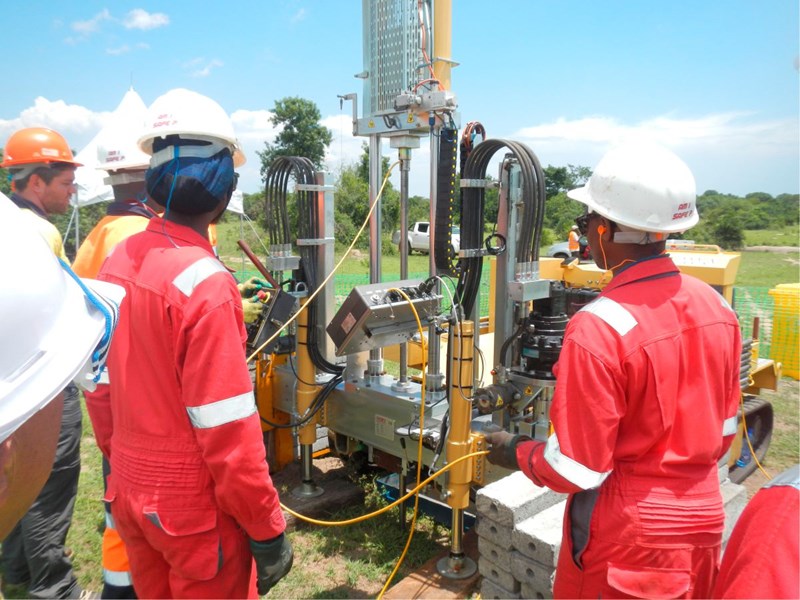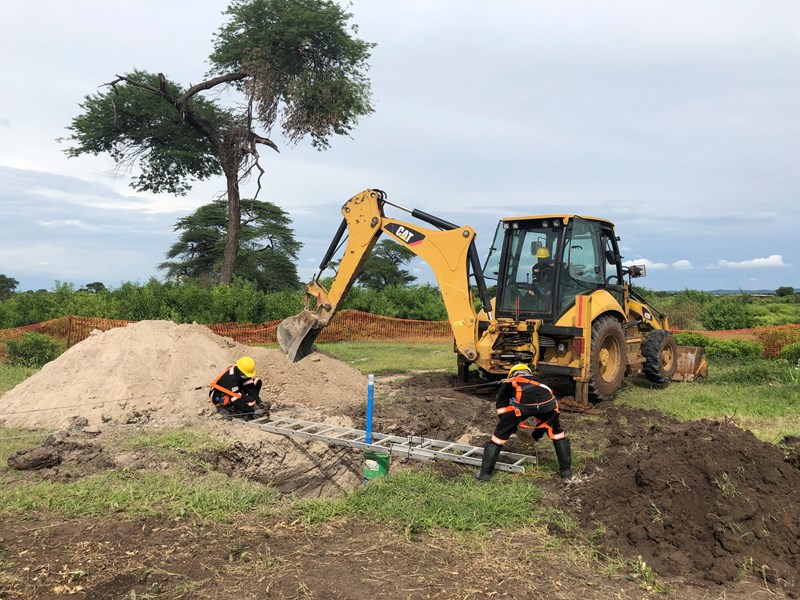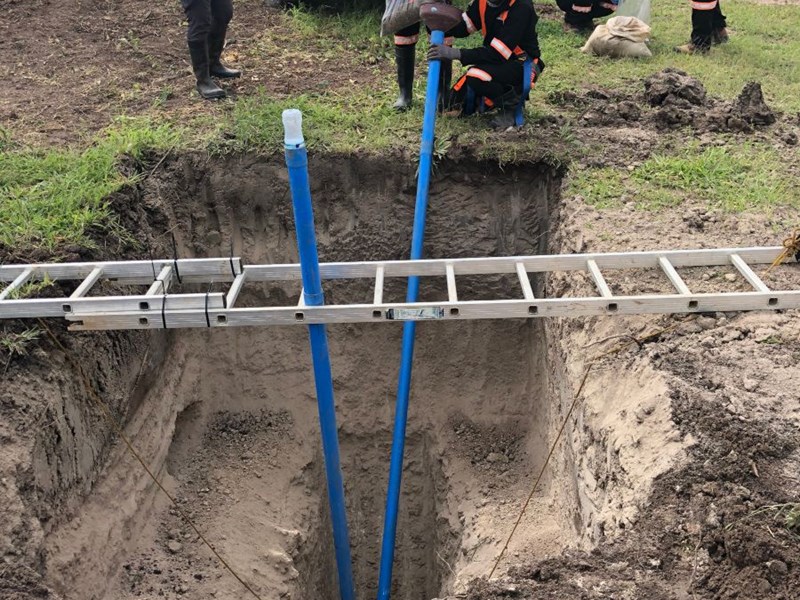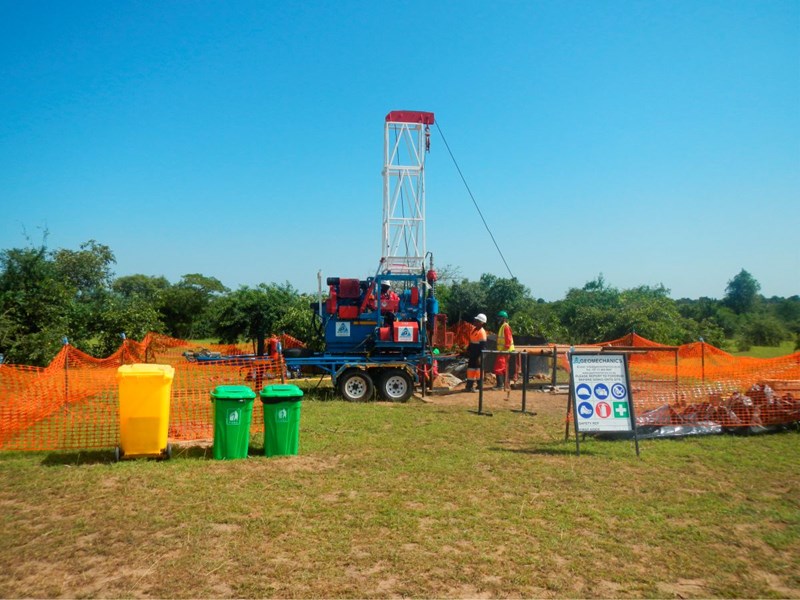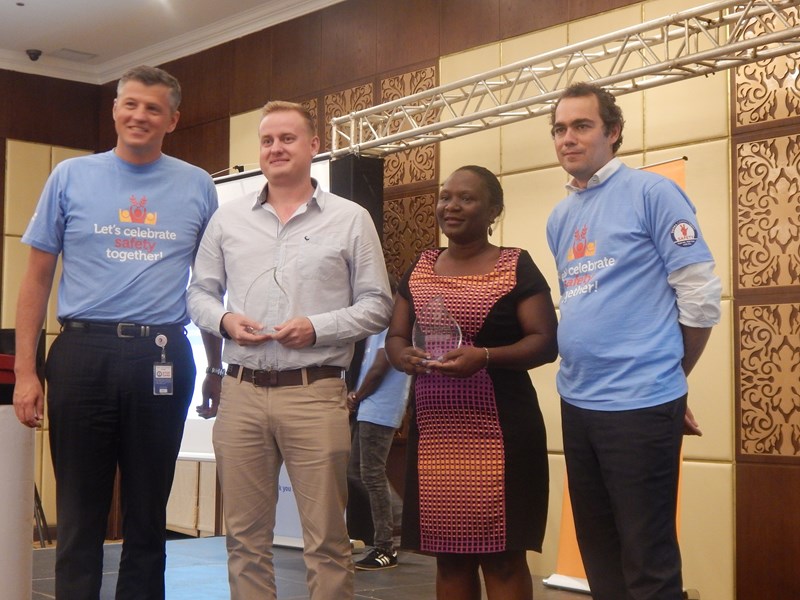Determining a new East African pipeline route for TOTAL
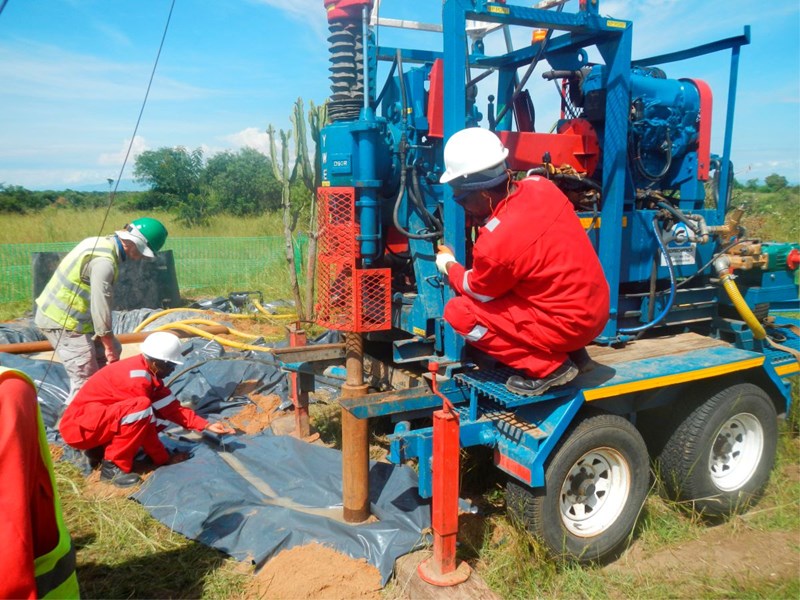
The extensive works undertaken by the GeoGroup for TOTAL’s Lake Albert Development Project TILENGA and East African Crude Oil Pipeline (EACOP) underscore the depth of expertise fielded by this South Africa based geotechnical contractor.
GeoGroup’s geotechnical investigations for a Central Processing Facility (CPF) in Bullisa, Western Uganda and a pipeline to transport crude oil from the CPF to the 1 443km pipeline to Tanga on the coast of Tanzania successfully put its skills to the test.
As testimony to its commitment to project excellence, GeoGroup subsidiary, Geomechanics recorded zero safety incidents during 120, 000 man-hours for the CPF portion of the project. “Right from preparation phase for the geotechnical surveys contract, which included a number of HSE workshops, Geomechanics always demonstrated a willingness to meet the stringent TOTAL HSE requirements,” says Tumwesigye Justus, H3SE/ Safety Operations (2018), TOTAL E&P Uganda.
“Even during operations, Geomechanics continued to comply with the TOTAL HSE requirements, as demonstrated by their score of 74% during the Operations HSE Audit for Geotechnical Operations," he continues. “As a result, Geomechanics was invited to present their ‘HSE Journey’ at the TOTAL Contractor Forum for the year 2017. In April 2018, Geomechanics won the award for Best Safety Performance 2017 at the TOTAL World Day for Safety awards for contractors.”
This was a multi-phased project divided into a series of work packages. The nearshore investigations entailed drilling and testing in riverbeds, lake floors and on land. Six rotary core holes and 5 CPTu tests were conducted in the Nile River and another 12 holes and 10 CPTu tests in Lake Albert.
Land based drilling included 49 rotary core holes and 135 CPTu tests. The pipeline investigations from the CPF to the coast of Tanzania required 21 rotary core holes, 41 CPTu tests and 94 trial pits in Uganda and 37 rotary core holes, 70 CPTu tests and 165 test pits in Tanzania.
The logistics required to successfully complete this project were substantial: more than 400 people needed to be housed in 19 different locations over a period of seven months. At any one time there were three full camps in operation, one for the advance team, one for the acquisition team and another being set up for the advance team to move into. The advance camp moved to a new location every 10-14 days.
Project location
The Tilenga project is located within TOTAL’s Exploration Area 1 (Block 1) on the eastern shore of Lake Albert and Exploration Area 2 (Block 2), covering the districts of Nwoya and Bulisa. The Northern part of the project area is split by Victoria Nile River. The scope of the investigation included the CPF, a pipeline section crossing under the Victoria River, well pads, and the Lake Water Abstraction (LWA) site.
The objective of the geotechnical investigations was to:
- Characterise the nature of the ground and groundwater
- Confirm lithology and thickness of subsurface layers, based on geophysical surveys previously conducted by Geomechanics
- Provide physical and geomechanical properties of soils required for the CPF, Nile River Pipe crossing, well pads and flow lines, and LWA
- Locate and characterise potential hazards along the planned project route
- Provide recommendations for the future CPF facility’s foundations, site preparation, and the Nile River Pipe crossing using horizontal directional drilling techniques
Work Package 1: CPF
Geomechanics personnel mobilised at Bugungu Camp, some 20 km from the CPF site. Work began with the CPTu rig on the 17th September 2017, followed by five drill rigs in a phased approach from the 18th to the 25th September 2017. In total 2298.09m of drilling was completed.
Tests completed indicate the complexity of the work on these and other phases:
- Borehole logs, core photographs and drillers’ logs
- Standard penetration tests, pocket penetrometer tests, pressure meter tests and cross-hole and downhole geophysics surveys
- Collection of undisturbed Shelby and intact core sub-samples
- Schematic drawings of the piezometer installations
- Cone penetration tests
- Groundwater level readings and in-situ water testing
- Trial pitting and DPL tests
- In-situ tests in trial pits: soil temperature, electrical conductivity, vane shear testing and soil infiltration tests
- As-built survey
- Laboratory testing
Throughout Geomechanic’s various investigations all samples taken from boreholes and trial pits were kept in a temperature-controlled environment. That began with air-conditioned tents on-site, to samples transfer via refrigerated trucks to a climate regulated laboratory. Each drill rig and test pitting team also had a permanently stationed and qualified geologist.
Work Package 2: Nile Crossing
The proposed Nile crossing pipeline spans a length of approximately 1.45 km in a north-south orientation, traversing below the Victoria Nile River. An alternative Nile crossing alignment, spanning approximately 1,3km, was later proposed approximately 4 km downstream, with both sites investigated.
Geomechanics’s barge and associated equipment arrived on the 11th November 2017 and was then transported to the Nile crossing survey area. Modifications where subsequently made to the barge to meet TOTAL’s health and safety requirements. All land based and offshore drilling and CPTs were complete by the 21st April 2018.
Guar Gum (a biodegradable and non-toxic hydrophilic polysaccharide from the seed of the guar plant) and water were used as a drilling fluid medium. This improved hole stability and enhanced lubricity of equipment to minimize mechanical breakdowns and facilitate recovery in troublesome formations such as clay zones. Guar Gum was also used on other phases.
Work Package 3: Well pads, feeder line and flow lines.
The geotechnical fieldwork for the well pads was carried out from 4th October to 19th December 2017. After the December shutdown, fieldwork recommenced on the 8th January 2018 and was completed on the 18th March 2018.
Lake Water Abstraction
Geomechanics completed one onshore CPT within the proposed LWA site boundary on the 3rd December 2017 prior to the December shutdown. Proceeding to the next stage, Geomechanics’s barge was moved to Lake Albert via the Victoria Nile River on the 27th April and commenced with offshore testing two days later.
“We negotiated our jack-up barge down the Victoria Nile, at times through 0.8m of water, to reach Lake Albert instead of having to disassemble the barge and transport it, resulting in a roughly three week saving,” explains Grant Rijsmus, Works Director at the GeoGroup.
“GeoGroup also upgraded the barge prior to mobilisation to suit the site conditions,” he expands. “The pontoons were lengthened by 1,8m to increase buoyancy and decrease the vessel’s draft. The diameter of the 11,8m long legs was also increased from 168mm to 350mm diameter to meet drilling depths down to 17m.”
At Lake Albert, a combination of inclement weather and high swells caused some downtime on production. The remainder of the land based CPTs were conducted from the 17th to 20th May 2018 and the single onshore borehole commenced drilling on the 24th June 2018.
East African Crude Oil Pipeline (EACOP) project: Tanzania and Uganda
Alongside, the CPF and allied work packages in Uganda, Geomechanics was responsible for executing the investigative work for the interrelated EACOP project on behalf of TOTAL East Africa Midstream B.V. This prepares the way for the design and construction of the 1 443km pipeline.
Geomechanic’s fieldwork in Tanzania commenced in October 2018 and ended in May 2019. In turn, works in Uganda started in February 2019 and also ended in May 2019.
The investigation sites in Tanzania and Uganda were spread across the entire pipeline route, crossing a variety of terrain. In general, the investigation sites were selected to be at river and infrastructure crossings, where faults are identified and where the pipeline route has particularly steep slopes. The detailed investigation points were refined on the basis of preliminary results and the preceding geophysical survey.
“Technically, the EACOP investigations were relatively straightforward due to the shallow depth of the boreholes,” says Rijsmus. “The key challenge was the linear nature of the investigation and the extensive distances involved.”
“However, the CPF and allied works for the Lake Albert Development were certainly one of our most technically involved and intricate projects to date,” he continues.
“Overall, the enormous scale makes it a truly milestone project for the GeoGroup, which celebrates its 30th anniversary in 2019,” Rijsmus concludes.
Right from preparation phase for the Geotechnical Surveys contract- which included a number of HSE Workshops, Geomechanics always demonstrated a willingness to meet the stringent TOTAL HSE requirements. Even during operations, Geomechanics has continued to comply with the TOTAL HSE requirements; as demonstrated by their score of 74% during the Operations HSE Audit for Geotechnical Operations. Resultantly Geomechanics was invited to present their” HSE Journey” at the TOTAL Contractor Forum for 2017. In addition, Geomechanics won an award for Best Safety Performance 2017 at the TOTAL World Day for Safety awards for contractors, on April 27th 2018”. We are pleased with these achievements- and encourage Geomechanics to continue to be vigilant for the remaining operations.
TUMWESIGYE Justus H3SE/ Safety Operations TOTAL E&P UGANDA

